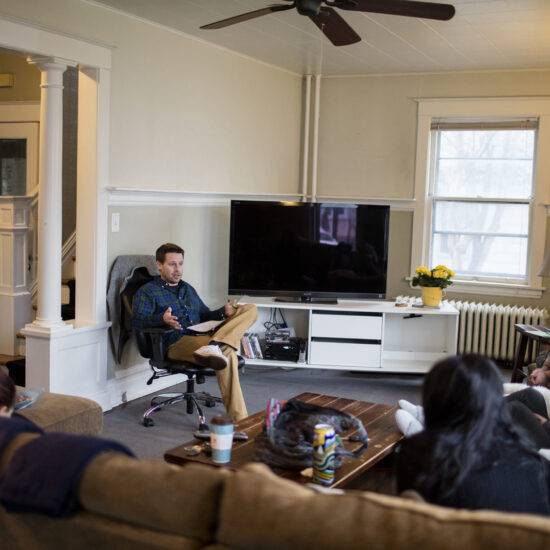The path to addiction recovery is challenging. A supportive living environment is essential for attaining and sustaining sobriety and personal development.
Sober living homes and halfway houses provide support for those transitioning from addiction treatment or incarceration, but they serve different purposes and needs.
This blog aims to clarify the differences and benefits of sober living vs halfway house, providing a comprehensive comparison to help individuals make informed decisions about their recovery journey.
Brief Overview of Addiction Recovery Journey
Addiction recovery is a multifaceted process that involves detoxification, rehabilitation, and long-term maintenance of sobriety. Each stage presents unique challenges that require appropriate support systems. Post-treatment, people often need structured environments to use the skills learned in rehab. Sober living homes and halfway houses provide this essential support.
Importance of Supportive Living Environments During Recovery
Supportive living environments play a vital role in the addiction recovery process. They offer stability, structure, and a community of peers with shared experiences and goals. These environments help people move from inpatient treatment to living on their own. They decrease the risk of relapse by offering accountability and continuous support.
Purpose of the Blog: Clarifying the Differences and Benefits of Sober Living Homes and Halfway Houses
The primary goal of this blog is to highlight the differences and benefits of sober living homes and halfway houses. By understanding these distinctions, individuals can better decide which environment aligns with their personal recovery needs and goals.
What Is a Sober Living Home?
Sober living homes are places where people recovering from substance abuse can live. They offer a structured but relaxed environment. A structured environment includes some clear rules, routines, meetings, sobriety requirements, counseling, curfews, etc. These homes help people transition from inpatient treatment to living on their own, allowing them to practice sober living skills in a supportive community.
Key Characteristics and Features
Structured but Less Restrictive Environment: Sober living homes balance structure and freedom, allowing residents to assume responsibility for their sobriety gradually.
Peer Support and Communal Living: Residents live with peers who are also in recovery, fostering a sense of community and mutual support.
Focus on Transitioning to Independent Living: The primary goal of sober living homes is to help residents develop the skills and habits necessary for independent, sober living.
How Does Sober Living Work?
Sober living homes offer structured, supportive environments with rules like curfews, mandatory meetings, and shared chores. They emphasize accountability and provide access to counseling, job training, and educational resources.
Typical Rules and Regulations
Sober living homes have rules and regulations designed to promote sobriety and accountability. Common rules include:
- Curfews: Curfew is a set time by which an individual must return to the sober living home. Curfews establish stability, ensure safety, and promote accountability. They help residents develop healthy routines, reduce relapse risks, and foster a supportive community, which is essential for successful recovery and personal growth.
- Mandatory Meetings: Regular house meetings and support group sessions promote community involvement and peer support. They enhance accountability, provide emotional support, improve communication skills, and offer a platform for sharing experiences and strategies essential for long-term sobriety.
- Chores: Chores in sober living homes foster responsibility, teamwork, and accountability. Sharing household tasks ensures a clean, orderly environment, teaches life skills, and promotes a sense of community and cooperation among residents, essential for their recovery journey.
Emphasis on Accountability and Self-Responsibility
Residents are encouraged to take responsibility for their actions and decisions, fostering a sense of accountability essential for long-term recovery.
Common Services and Support Offered
Sober living homes often provide access to various services and support, including:
- Counseling: Individual sessions provide personalized support for emotional and psychological needs, while group sessions offer shared experiences and peer support, fostering community and collective healing in the recovery process.
- Job Training: Assists with job searches, resume writing, and interview preparation, alongside vocational training programs to develop specific skills, helping residents secure and maintain employment.
- Educational Resources: Offers support for continuing education, college courses, and online learning, along with skill development workshops in areas like computer literacy and financial management.
What Is a Halfway House?
Halfway houses are residential facilities that provide transitional living for people recently released from prison or those who have completed substance abuse treatment. These houses offer a higher level of supervision and structure compared to sober living homes.
Key Characteristics and Features
Transitional Living for Those Recently Released from Incarceration or Treatment: Halfway houses offer support and guidance, helping residents reintegrate into society by teaching life skills, providing counseling, and assisting with job placement.
Higher Level of Supervision and Structure: These facilities have strict rules and monitoring to ensure residents comply with legal and treatment requirements.
Often Part of Legal or Court-Ordered Programs: Many residents are placed in halfway houses as part of court orders or legal mandates.
How Does a Halfway House Work?
Halfway houses enforce strict rules and curfews for order and safety. Residents attend mandatory programs like counseling, job training, and life skills workshops. Regular monitoring, including drug tests and check-ins, ensures rule compliance. This structure helps residents stay on track with recovery, follow legal requirements, and transition back into society.
Typical Rules and Regulations
Halfway houses have stringent rules to ensure residents adhere to recovery and legal obligations. Common regulations include:
- Strict Curfews: Residents must adhere to specific curfew times, ensuring they return to the facility by a designated hour each evening. This helps maintain a structured environment and reduces the likelihood of risky behavior.
- Mandatory Programs: Residents are required to participate in various treatment programs, therapy sessions, or counseling. These programs are designed to support their recovery, provide coping strategies, and address any underlying issues contributing to their previous behavior.
- Monitoring: Regular drug testing and monitoring are conducted to ensure residents remain sober and comply with house rules. This includes routine check-ins and random drug tests to verify that residents are following the sobriety requirements and making progress in their recovery.
Emphasis on Reintegration into Society and Compliance with Legal Requirements
Halfway houses help residents reintegrate into society by providing support and supervision, ensuring they meet legal and recovery requirements for a successful transition to independent living.
Common Services and Support Offered
Halfway houses offer a range of services to aid in residents’ reintegration, including:
- Vocational Training: Comprehensive programs designed to develop essential job skills, enhance employability, and assist residents in securing meaningful employment, thereby supporting their transition to independent living.
- Educational Programs: Offering opportunities for continuing education and skill development, these programs help residents enhance their knowledge, gain new qualifications, and improve their prospects for future career growth.
- Life Skills Development: Providing training in essential life skills, these programs help residents learn practical skills such as budgeting, cooking, and time management, crucial for promoting successful and independent living.
What’s the Difference: Sober Living vs Halfway House
Source: https://www.northpointwashington.com/washington/oak-harbor-resources/
Sober living homes emphasize personal responsibility and community support, while halfway houses focus on legal compliance and reintegration, offering higher supervision. The difference between these two can be further divided into 4 ways as given below.
Comparison of Structure and Supervision Levels
Sober living homes offer a structured yet less restrictive environment, focusing on personal responsibility and community support. In contrast, halfway houses provide higher supervision and are often part of legal or court-ordered programs, emphasizing compliance with legal requirements.
Differences in Resident Demographics and Eligibility Criteria
Sober living homes cater to individuals in recovery from substance abuse, regardless of their legal background. Halfway houses usually serve individuals transitioning from incarceration or court-mandated treatment programs.
Varied Focus on Personal Responsibility Versus Legal Compliance
Sober living homes prioritize fostering personal responsibility and self-reliance, while halfway houses emphasize legal compliance and reintegration into society.
Differing Lengths of Stay and Transition Goals
Sober living homes generally do not have a specified time limit for residency, allowing for longer-term support. Halfway houses often have a limited duration of stay, focusing on short-term transition and reintegration.
Which One Is Best for You?
Choosing from sober living vs halfway house involves considering several factors, including:
- Personal Recovery Stage and Goals: Consider where you are in your recovery journey and what your long-term goals are.
- Level of Needed Structure and Supervision: Assess how much supervision and structure you need to maintain sobriety.
- Legal Requirements and Court Mandates: Determine if you have any legal obligations that require placement in a halfway house.
- Available Support Services and Community Integration: Evaluate the support services and community integration offered by each type of facility.
FAQs
Que: Is It Possible to Leave a Sober Living Home or Halfway House Whenever You Want?
Ans: Sober living homes typically allow voluntary residency, meaning you can leave at any time. Halfway houses, especially those mandated by court orders, may have restrictions on when and how residents can leave.
Que: What Are the Costs Associated with Each?
Ans: Sober living homes are usually privately funded by residents’ fees, which can vary based on amenities and services. Halfway houses are often government-funded, making them less expensive but with fewer amenities.
Que: Can Family Members Visit?
Ans: Both types of facilities generally allow family visits, but the policies and visiting hours may vary.
Que: What Is the Success Rate of Each Type of Facility?
Ans: Success rates can vary widely based on individual circumstances, the quality of the facility, and the level of support provided. Sober living homes, with their focus on long-term support, may offer better outcomes for sustained sobriety.
Conclusion
Understanding the sober living vs halfway house is crucial for selecting the appropriate recovery path. Sober living homes focus on personal responsibility and community support, while halfway houses provide more supervision and are often court-ordered.
Choosing the right living environment is crucial for recovery success. Consider your needs, recovery stage, and any legal requirements when deciding between a sober living home and a halfway house.
Supportive living environments, such as sober living homes or halfway houses, are essential for maintaining long-term sobriety. They offer structure, support, and community to help individuals transition from treatment to independent living. Knowing their differences helps you choose the best option for your recovery.
Ready to discover the ideal supportive living environment for your recovery journey? Get in touch with BHouses today to explore your options and advance towards a healthier, sober life.










